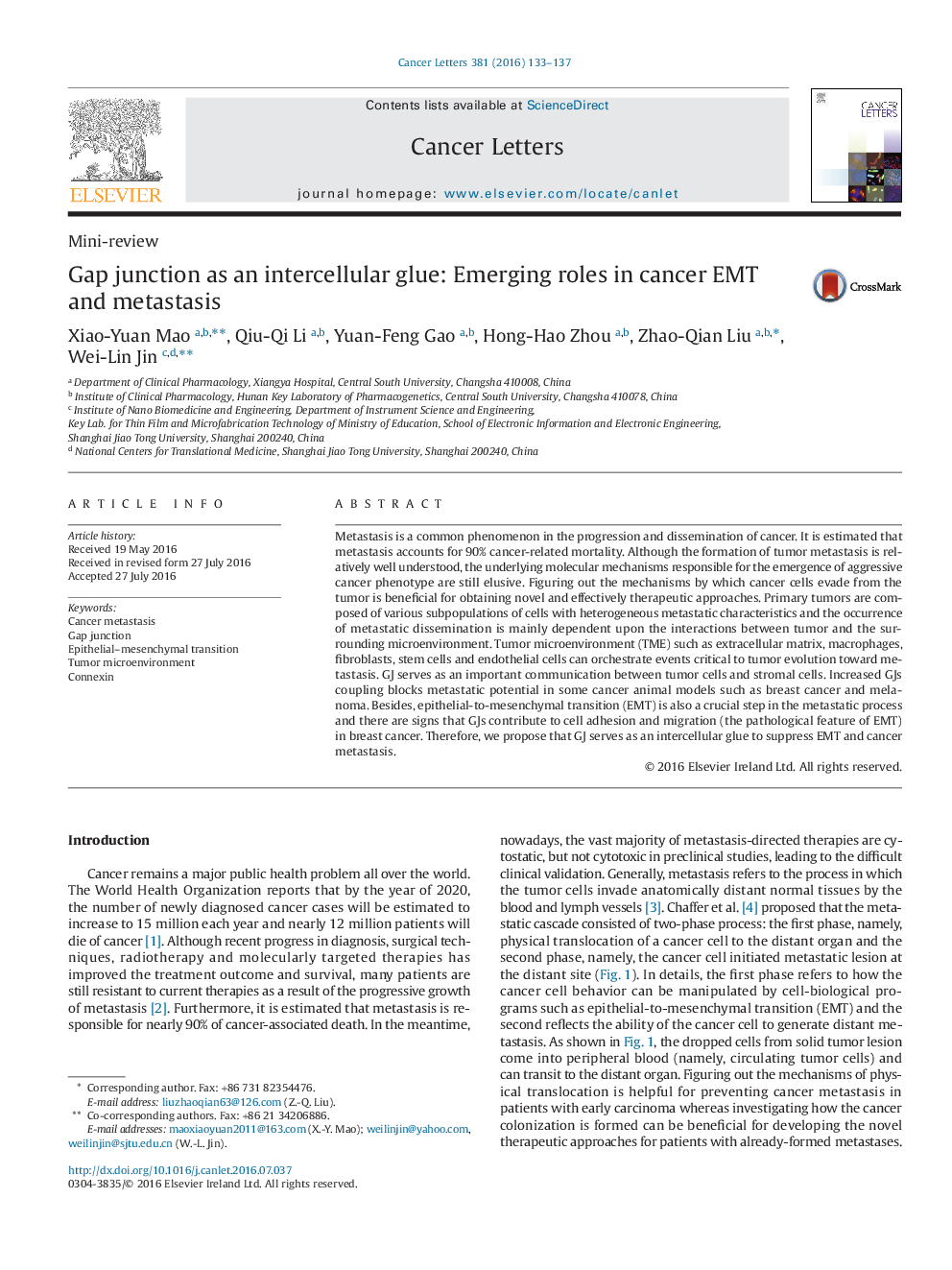| کد مقاله | کد نشریه | سال انتشار | مقاله انگلیسی | نسخه تمام متن |
|---|---|---|---|---|
| 10899255 | 1084354 | 2016 | 5 صفحه PDF | دانلود رایگان |
عنوان انگلیسی مقاله ISI
Gap junction as an intercellular glue: Emerging roles in cancer EMT and metastasis
دانلود مقاله + سفارش ترجمه
دانلود مقاله ISI انگلیسی
رایگان برای ایرانیان
کلمات کلیدی
موضوعات مرتبط
علوم زیستی و بیوفناوری
بیوشیمی، ژنتیک و زیست شناسی مولکولی
تحقیقات سرطان
پیش نمایش صفحه اول مقاله

چکیده انگلیسی
Metastasis is a common phenomenon in the progression and dissemination of cancer. It is estimated that metastasis accounts for 90% cancer-related mortality. Although the formation of tumor metastasis is relatively well understood, the underlying molecular mechanisms responsible for the emergence of aggressive cancer phenotype are still elusive. Figuring out the mechanisms by which cancer cells evade from the tumor is beneficial for obtaining novel and effectively therapeutic approaches. Primary tumors are composed of various subpopulations of cells with heterogeneous metastatic characteristics and the occurrence of metastatic dissemination is mainly dependent upon the interactions between tumor and the surrounding microenvironment. Tumor microenvironment (TME) such as extracellular matrix, macrophages, fibroblasts, stem cells and endothelial cells can orchestrate events critical to tumor evolution toward metastasis. GJ serves as an important communication between tumor cells and stromal cells. Increased GJs coupling blocks metastatic potential in some cancer animal models such as breast cancer and melanoma. Besides, epithelial-to-mesenchymal transition (EMT) is also a crucial step in the metastatic process and there are signs that GJs contribute to cell adhesion and migration (the pathological feature of EMT) in breast cancer. Therefore, we propose that GJ serves as an intercellular glue to suppress EMT and cancer metastasis.
ناشر
Database: Elsevier - ScienceDirect (ساینس دایرکت)
Journal: Cancer Letters - Volume 381, Issue 1, 10 October 2016, Pages 133-137
Journal: Cancer Letters - Volume 381, Issue 1, 10 October 2016, Pages 133-137
نویسندگان
Xiao-Yuan Mao, Qiu-Qi Li, Yuan-Feng Gao, Hong-Hao Zhou, Zhao-Qian Liu, Wei-Lin Jin,